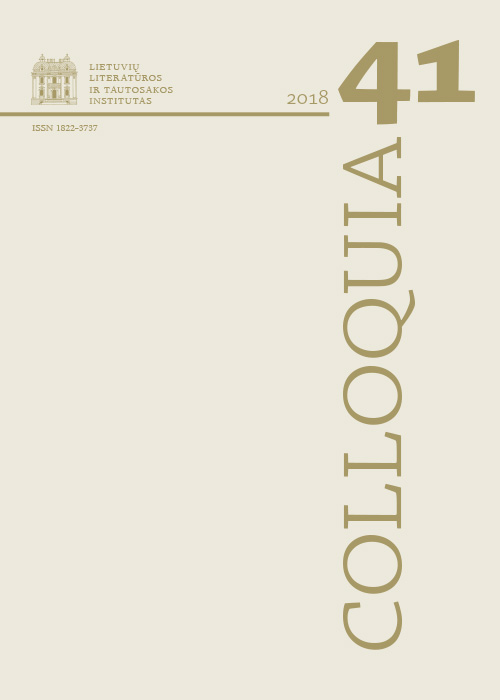Bearded, Sad, and Carrying a Small Volume of Kafka’s Writings: the Golden Youth of the 1960s in the Lithuanian Prose
Abstract
„Youth“ is one of the most important keywords of the Khrushchev Thaw. Undoubtedly, it was part of the ideology of the era – a young, impetuous, enthusiastic person, who keeps rushing to the romantic horizons and experiences an elevated sense of freedom in a totalitarian state. This was the response of the Khrushchev era to Stalin’s personality cult. The author of the article, by using the cultural and political context of the Thaw, reads two works – long story The Pine That Laughed (Pušis, kuri juokėsi) by Justinas Marcinkevičius and short story A Girl Passed By (Praėjo mergina) by Juozas Baltušis.
These works by Marcinkevičius and Baltušis are the texts full of euphoria and utopia typical for the Thaw, which respond to the realities of that time and evaluate them from the aspect of the communist party, also confirming the ideology of the Thaw. Impetuosity, rational having of a purpose, puritanism, faith in education, the pursuit of a society without contradictions, and other traits of classical utopias are found in these texts. In both cases, the official ideology coincides with the conservative rural ethos and the opinion on youth morality that stems from it. The analysis of the works shows the ways in which depiction of the youth correlates with the cult of youth typical of communist ideology of those times, while the critique of the youth corresponds to the official image of a young person.
Both writers portray their criticized and re-educated characters (Romas and Liana) as living on an island or under a bell jar and building their separate, but also completely wrong world. They are asocial, deviated from society and real life, cynical, appreciating sophisticated thinking and formalism, insincere, destructive and somewhat dangerous to the healthy Soviet society. Both authors show in their works that such young people are at risk of tragedies in their life. The only alternative is the exemplary path of the Soviet youth.
Downloads
Most read articles by the same author(s)
- Rimantas Kmita, Rebellion Under the Conditions of “Mature Socialism”: The Case of Sigitas Geda , Colloquia: Vol. 34 (2015)
